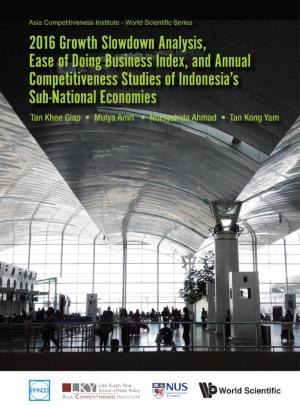Glassy Disordered Systems
Glass Formation and Universal Anomalous Low-Energy Properties
Nonfiction, Science & Nature, Technology, Optics, Material Science| Author: | Michael I Klinger | ISBN: | 9789814407496 |
| Publisher: | World Scientific Publishing Company | Publication: | March 14, 2013 |
| Imprint: | WSPC | Language: | English |
| Author: | Michael I Klinger |
| ISBN: | 9789814407496 |
| Publisher: | World Scientific Publishing Company |
| Publication: | March 14, 2013 |
| Imprint: | WSPC |
| Language: | English |
The present book describes the fundamental features of glassy disordered systems at high temperatures (close to the liquid-to-glass transition) and for the first time in a book, the universal anomalous properties of glasses at low energies (i.e. temperatures/frequencies lower than the Debye values) are depicted. Several important theoretical models for both the glass formation and the universal anomalous properties of glasses are described and analyzed. The origin and main features of soft atomic-motion modes and their excitations, as well as their role in the anomalous properties, are considered in detail. It is shown particularly that the soft-mode model gives rise to a consistent description of the anomalous properties. Additional manifestations of the soft modes in glassy phenomena are described. Other models of the anomalous glassy properties can be considered as limit cases of the soft-mode model for either very low or moderately low temperatures/frequencies.
Contents:
-
Fundamental Properties of Glasses:
- General Description of Glasses and Glass Transition
- Models of Glassy (Topologically Disordered) Structures
- Some Theoretical Models of Glass Transition
- Kohlrausch–William–Watt (KWW) Relaxation
-
Anomalous Low-Energy Dynamics of Glasses:
- Origin of Anomalous Low-Energy Properties of Glasses
- Experimental Background for Anomalous Low-Energy Atomic Dynamics
- Soft-Mode Model of Low-Energy Atomic Dynamics
- Soft-Mode Excitations of Very Low and “Intermediate” Energies
- Tunneling States as Very Low Energy Limit Case
- Soft-Mode Excitations of Moderately-Low Energies (Boson Peak)
- On Universal and Non-Universal Dynamic Properties of Glasses
- Other Models for Glasses with High Frequency Sound
- Recent Models for Glasses with No High-Frequency Sound
- Anomalous Electron Properties of Semiconducting Glasses
- Soft-Mode Model of Localized Electron States in the Glasses
- Additional Manifestations of Soft Modes in Glasses
- Summary, Conclusions and Problems
Readership: Graduate students in the field of amorphous solids, professional theoretical physicists in glasses, professional experimentalists in glasses.
Key Features:
- First-ever published book based on the Soft-Mode Model of Low Energy Atomic Dynamics in Glassy Disordered systems
- The treatment of the topic of Universal Anomalous properties of Glasses at low temperatures is unique
- There are no competing titles for the book
The present book describes the fundamental features of glassy disordered systems at high temperatures (close to the liquid-to-glass transition) and for the first time in a book, the universal anomalous properties of glasses at low energies (i.e. temperatures/frequencies lower than the Debye values) are depicted. Several important theoretical models for both the glass formation and the universal anomalous properties of glasses are described and analyzed. The origin and main features of soft atomic-motion modes and their excitations, as well as their role in the anomalous properties, are considered in detail. It is shown particularly that the soft-mode model gives rise to a consistent description of the anomalous properties. Additional manifestations of the soft modes in glassy phenomena are described. Other models of the anomalous glassy properties can be considered as limit cases of the soft-mode model for either very low or moderately low temperatures/frequencies.
Contents:
-
Fundamental Properties of Glasses:
- General Description of Glasses and Glass Transition
- Models of Glassy (Topologically Disordered) Structures
- Some Theoretical Models of Glass Transition
- Kohlrausch–William–Watt (KWW) Relaxation
-
Anomalous Low-Energy Dynamics of Glasses:
- Origin of Anomalous Low-Energy Properties of Glasses
- Experimental Background for Anomalous Low-Energy Atomic Dynamics
- Soft-Mode Model of Low-Energy Atomic Dynamics
- Soft-Mode Excitations of Very Low and “Intermediate” Energies
- Tunneling States as Very Low Energy Limit Case
- Soft-Mode Excitations of Moderately-Low Energies (Boson Peak)
- On Universal and Non-Universal Dynamic Properties of Glasses
- Other Models for Glasses with High Frequency Sound
- Recent Models for Glasses with No High-Frequency Sound
- Anomalous Electron Properties of Semiconducting Glasses
- Soft-Mode Model of Localized Electron States in the Glasses
- Additional Manifestations of Soft Modes in Glasses
- Summary, Conclusions and Problems
Readership: Graduate students in the field of amorphous solids, professional theoretical physicists in glasses, professional experimentalists in glasses.
Key Features:
- First-ever published book based on the Soft-Mode Model of Low Energy Atomic Dynamics in Glassy Disordered systems
- The treatment of the topic of Universal Anomalous properties of Glasses at low temperatures is unique
- There are no competing titles for the book















